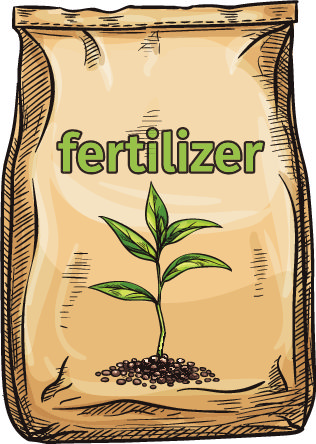Amanda Phillips
Contributor
Lowering fertilizer cost is critical in today’s economy. Reducing commercial fertilizer rates is probably the most helpful thing a farmer can do to cut costs, but it is a fine line from providing enough fertilizer for excellent yields and maintaining profit margins. This delicate balance may be helped by employing cover crops to help with soil amendments for the next crop and potentially lowering the amount of commercial fertilizer purchased. The benefits of cover crops are many and are not limited to just lowering fertilizer cost. Cover crops both increase soil organic matter and enhance soil fertility. Cover crops can be utilized between cash crop cycles or intercropped with a cash crop.
Cover crop selection should be carefully thought out to provide proper nutrient release with the specific future crop demand. One of the issues with this is the difficulty in determining how much cover crop will be produced and its corresponding nutrient content. It is also difficult to determine how fast the cover crop material will decompose in the field to release the nutrients back into the soil. Luckily, we have new research surfacing that is helping to determine the average nitrogen content received and the cost effectiveness of the cover crop investment. As reported in Southeast Farm Press Aug. 3 issue, a new 2020 study out of the University of Georgia Extension in South Georgia has recently published preliminary results of utilizing various cover crop types and the nitrogen yields for each. With the average nitrogen gains from the cover crop alone being enough that the farmer was able to more than pay for the seed and cost of planting, this bolsters the idea of cost effectiveness of cover crop usage. The on-farm trial was able to cut side dressing of nitrogen by up to 75 lbs. per acre depending on the type of cover crop. This could be a significant amount of money savings as we look for fertilizer costs to continue to soar upwards.
As a general rule, rotate your cash crop to cover crop types from broadleaf to grass based. Plant a broadleaf cover crop prior to a grass cash crop and vice versa. For example, if I plant a grass type cover crop such as in a forage-based rotation, then my next cash crop should be of a broad leaf type. Also, of great importance is to choose a cover crop that is not a host for common pests of the next cash crop. In North Florida, where nematodes can potentially cause damage to future cash crops, choose cover crop that are known to reduce nematode populations such as winter rye or sunnhemp. Often blended varieties that provide multiple beneficial cover crops have the best performance on trial. This allows farmers to combine benefits, and many have a synergistic benefit of being planted together that is greater than if they are planted alone. UF/IFAS is an Equal Opportunity Institution.
References:
Haire, B. (2022, August 3). Study Confirms Cover Crop Can Cut Nitrogen Needs, Maintain Yield. Southeast Farm Press. Retrieved August 10, 2022, from https://lsc- pagepro.mydigitalpublication.com/publication/?m=67568&i=754933&p=12&pre=1&ver=html5.
Newman, Yoana C., David L. Wright, Cheryl Mackowiak, J.M.S. Scholberg, and C. M. Cherr. 2007. “Benefits of Cover Crops for Soil Health: SS AGR 272/AG277, 11/2007”. EDIS 2007 (20). https://doi.org/10.32473/edis- ag277-2007.
Perez, J. (2015, September 24). Cover Crops for Pest Management and Soil Health [web log]. Retrieved August 10, 2022, from https://blogs.ifas.ufl.edu/smallfarms/2015/09/24/photostory-cover-crops/.
Sustainable Agricultural Research and Education. 2013. Managing Cover Crops Profitably: Third edition. Available at website http://www.sare.org/Learning-Center/Books/Managing-Cover-Crops-Profitably-3rd-Edition.
Y. Newman, et al, "Cover Crops (SS-AGR-66)," Agronomy Department (revised 12/2017).

